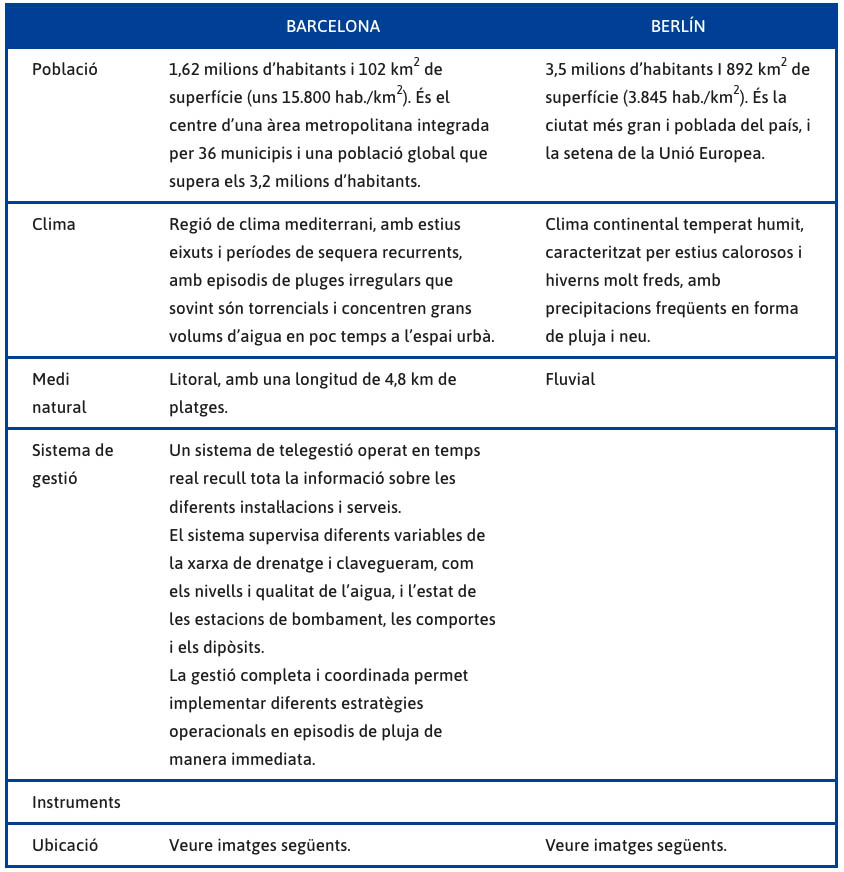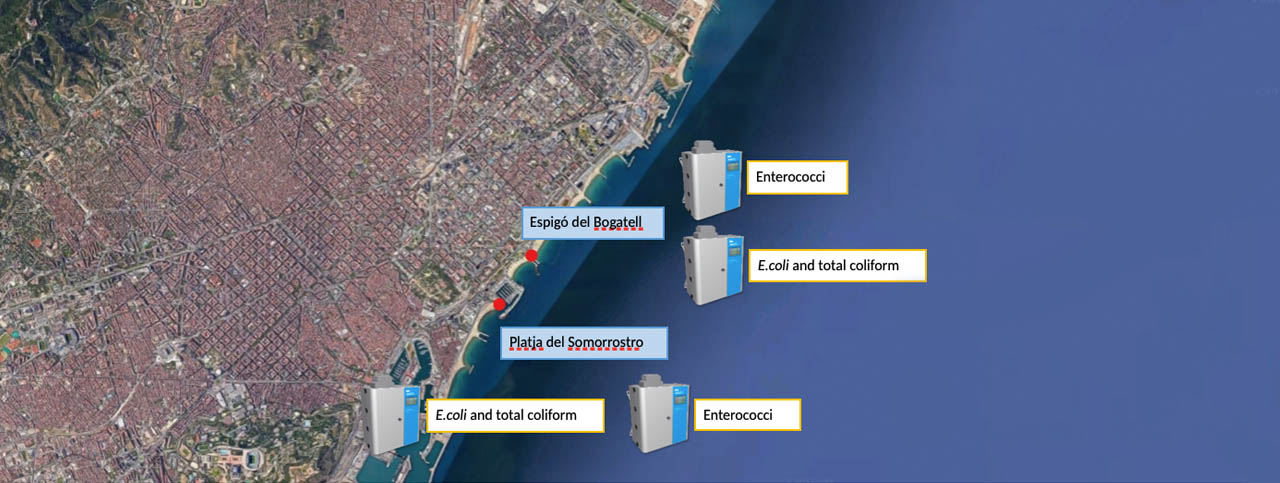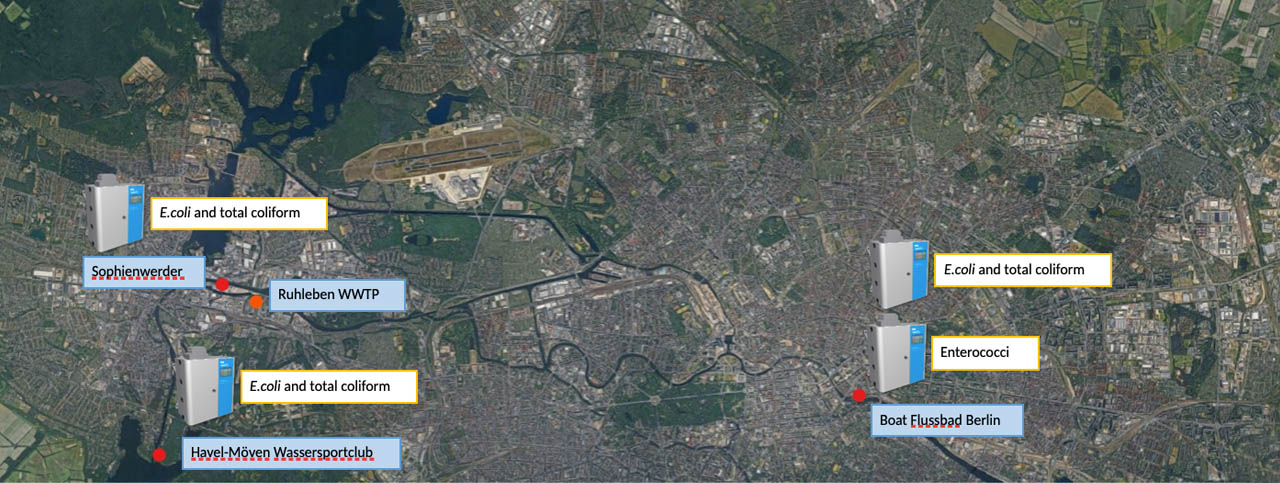Home / Inici » Pilot cities »
Presentation
The cities taking part in the project represent two different types of natural water environments: the coastal in Barcelona, and the river in Berlin. This enables technical assessments of both fresh water and salt water.
Barcelona and Berlin are two cities with very different climatic, meteorological and biogeographic features, as are their respective water cycles and natural water landscapes. This influences the planning and management model for the urban water cycle that applies.
These distinguishing features between the two cities allow an assessment to be made of the iBATHWATER platform and the behaviour of the measuring equipment under two different urban conditions – the salt water of a Mediterranean coastal landscape and the fresh water of a central European river passage – making the project and its demonstrative initiatives extremely important.
|
BARCELONA |
BERLIN |
|
| Population | 1.62 million residents (approx. 15,800 resid./km2). It is also the centre an a metropolitan area made up of 36 municipalities land and an overall population of more than 3.2 million residents. |
3.75 million residents; city area 861 km2 (6.7 {e082e174629d35a9961e0e0507c24652de7a81c625d6406c964cde87c94c9e5d} water surfaces, 18.7 {e082e174629d35a9961e0e0507c24652de7a81c625d6406c964cde87c94c9e5d} wood area/parks). Population density: 4.062 resid./km2 |
| Climate | A Mediterranean-climate region, with dry summers and recurring periods of drought, with irregular episodes of rainfall that are often torrential and which concentrate large volumes of water in a short period of time in urban space. | A humid temperate continental climate, notable for its hot summers and very cold winters, with frequent rain and snow precipitation, compared to whole Germany relatively low annual precipitation in average. |
| Natural environment | Coastal, 4.8 km long. | Regulated rivers and lakes (6.7 {e082e174629d35a9961e0e0507c24652de7a81c625d6406c964cde87c94c9e5d} of city area are water surfaces) |
| Management system | A remote management system operated in real time gathers all the information on the various facilities and services. The system monitors several variables from the drainage and sewerage system, such as water levels and quality and the state of the pumping stations, floodgates and tanks. Complete and coordinated management enables several operational strategies to be immediately implemented during episodes of rainfall. |
The objective pursued by the Berlin Senate is to adapt a management strategy, which allows the city to rely on its own water resources. The utility “Berliner Wasserbetriebe” is responsible for supplying and treating drinking water and recycling wastewater in berlin. The water supply has been designed to be replenished by surface water through bank filtration and aquifer recharge via infiltration ponds. Due to low natural discharge in its rivers, treated wastewater contributes significantly to the overall flow, thus generating a partially closed water cycle. |
| Equipment | Open platform Measuring Equipment Dispersal Models Retention elements Eines de decisió (KDSS) |
Open platform Measuring Equipment Dispersal Models Eines de decisió (KDSS) |
| Location | Somorrostro and Bogatell beaches. | Sophienwerder (a measurement station of the Berlin Senate) and in the river Havel close to the bridge Heerstraße. |




